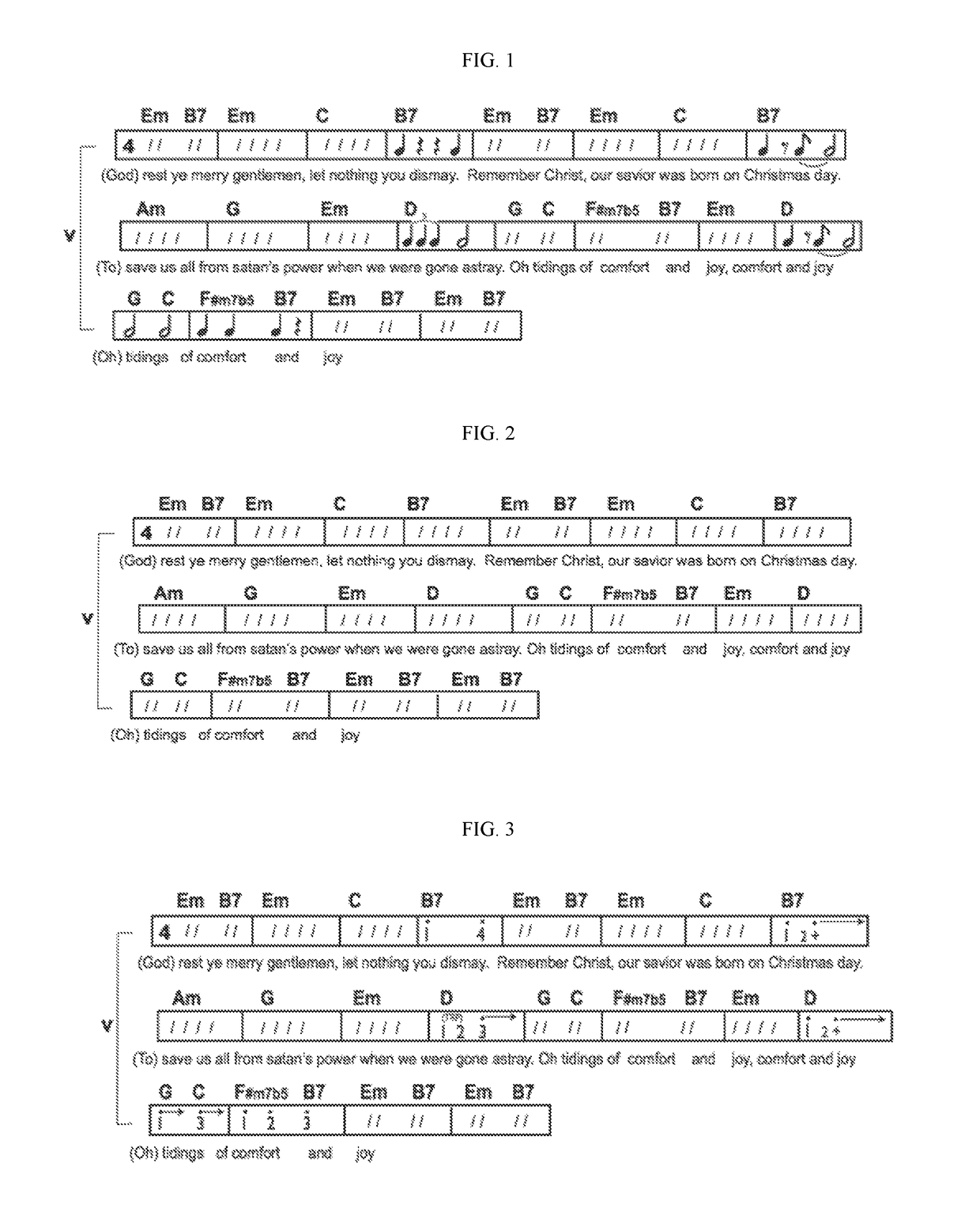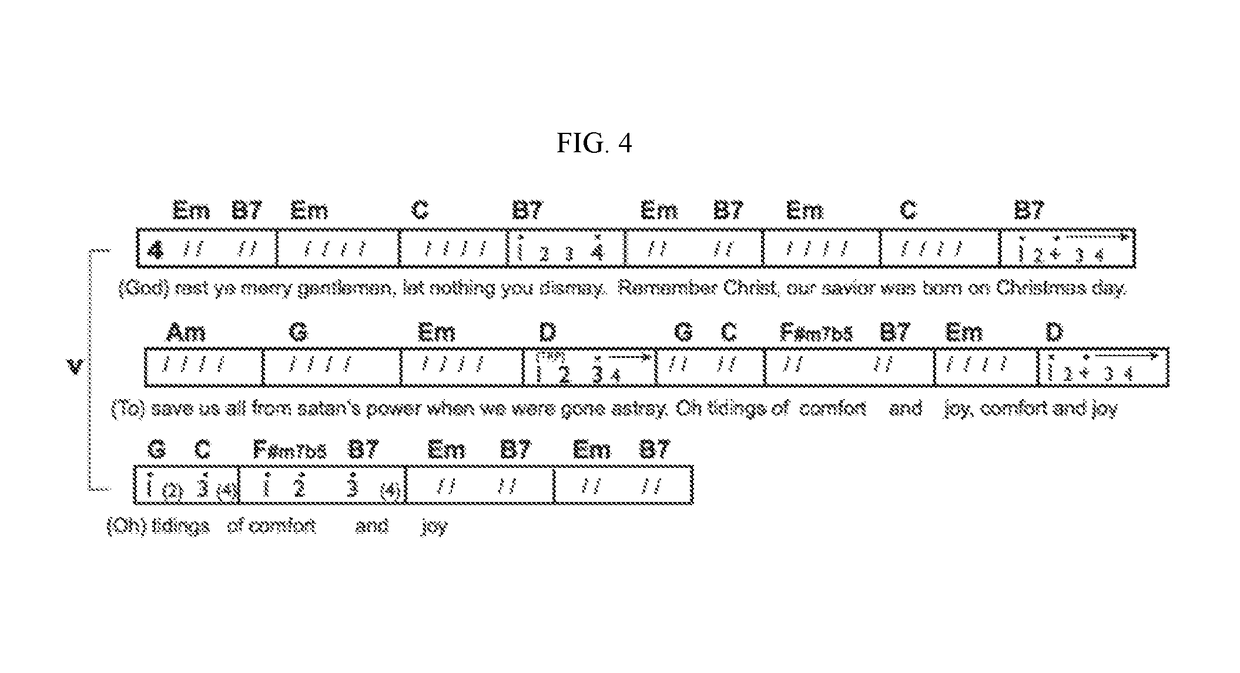Music notation and charting method
a music notation and charting technology, applied in the field of music notation and charting, can solve the problems of inefficiency in the presentation of essential information, inability to convey some of the most basic musical information, and inability to bury the essential parts, so as to achieve the effect of compact and streamlined presentation
- Summary
- Abstract
- Description
- Claims
- Application Information
AI Technical Summary
Benefits of technology
Problems solved by technology
Method used
Image
Examples
example # 1
Example #1
[0145]The first example utilizes a typical comp chart format for the first three measures, and then includes two measures of standard staff notation. The comp chart's included beat number establishes the basic format (4 beats per measure) and chord symbols show the standard chord changes for the first three measures. For the two measures of standard notation, a clef is provided (in this case, a “G” or treble clef). Both a key signature and time signature are, however, omitted.
[0146]The time signature is considered unnecessary because the beat number from the comp chart section established a 4 beat per measure format that does not change when transitioning into the traditional staff measures. If it did, a time signature could be included. In the interest of space and cleanliness, however, it is omitted here, and deemed unnecessary. The same is true of the key signature. In this case, the key is actually ‘C’ and therefore wouldn't have any sharps or flats written as the key ...
example # 2
Example #2
[0148]The second example is identical in function to the first, and thus the formatting elements are all the same for the first three measures. The last two measures are written in tablature (specifically 6-string guitar tablature, in this case). Both bass-specific tablature (which is also common) or tablature for other stringed instruments (banjo, mandolin, etc.) may be utilized instead.
[0149]Tablature is a specific type of notation that attempts to show physical locations of notes on a stringed instrument. It is still read left to right, in the same way as standard notation. Many times, tablature does not include time signature designations at all, and rarely does it include any note durations. In the included example, the time signature is deemed unnecessary for the same reason as was cited for ‘example #1’ above. It could be included any time where it would be deemed necessary by an arranger, although anywhere where a time signature might be required would be equally s...
examples
[0163]A—Rock Rhythms
[0164]A1—(link to specific audio / video file)
[0165]verse rhythm, beginning at 1 m45 s
[0166]A2—(link to another specific audio / video file) chorus rhythm, 2 m11 s-2 m36 s
[0167]B—Pop Rhythms
[0168]B1—(link to specific audio / video file)
[0169]intro groove, 0 m1 s-0 m20 s
[0170]B2—(link to drum rhythm chart)
[0171]similar to verse rhythm in (popular song reference)
[0172]etc.
[0173]See FIG. 10.
PUM
 Login to View More
Login to View More Abstract
Description
Claims
Application Information
 Login to View More
Login to View More - R&D
- Intellectual Property
- Life Sciences
- Materials
- Tech Scout
- Unparalleled Data Quality
- Higher Quality Content
- 60% Fewer Hallucinations
Browse by: Latest US Patents, China's latest patents, Technical Efficacy Thesaurus, Application Domain, Technology Topic, Popular Technical Reports.
© 2025 PatSnap. All rights reserved.Legal|Privacy policy|Modern Slavery Act Transparency Statement|Sitemap|About US| Contact US: help@patsnap.com



